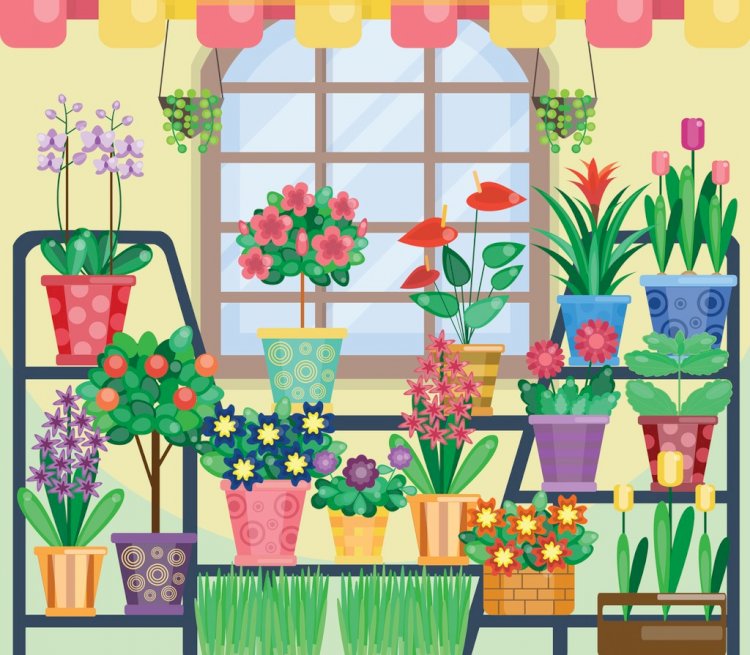12 Plants That Can Help Clean Your Indoor Air
It’s a well-accepted fact that outdoor air, especially in the city, can be incredibly polluted. However, the air inside our homes is also surprisingly unclean.

It’s a well-accepted fact that outdoor air, especially in the city, can be incredibly polluted. However, the air inside our homes is also surprisingly unclean.
The Environmental Protection Agency estimates that indoor air is three to five times more polluted than outdoor air.
While the walls of your home keep out the cold air, wind, and rain, they also keep in the harmful chemicals given off by the products in your home. Paints and lacquers give off xylene, furniture wax and insect sprays send out benzene, and your furniture upholstery and air fresheners give off formaldehyde. All these indoor air irritants can lead to headaches, sore throats, and breathing trouble that mimics allergies.
But you don’t need to spend a ton of money on an expensive indoor air purifier to help make your home’s air cleaner. Here are 12 plants that can help clean your indoor air, according to the NASA Clean Air Study:
Dwarf Date Palm

This hardy, drought-resistant plant can live for decades and grow 8 to 10 feet tall.
It’s a slow-growing plant that, once mature, has sharp, needle-like spines arranged near the leaf stem. But be careful - Those needles are sharp and can penetrate through clothing. Because of this, the dwarf date palm may not be the best option if you have young children or pets.
This plant is notable for its ability to filter out xylene.
Boston Fern
Because Boston ferns are native to tropical climates, they thrive in environments with low light and high humidity.
This makes Boston ferns great for your bathroom, as the steam from your shower will hydrate the plant and make it incredibly low-maintenance for you.
Like the dwarf date palm, the Boston fern is great for filtering out xylene. It also is the top houseplant for removing formaldehyde.
Kimberly Queen Fern

This plant can take much more heat and sun than the Boston fern, mostly because it originates from Australia.
The Kimberly Queen fern also grows upward instead of out, making the leaves less likely to trail along the ground.
It also filters out xylene, and its more hardy nature lends it well to being located on porches near garages where paints and lacquers are stored or in use.
Spider Plants
Characterized by thinner, flat leaves, spider plants are exceptional at filtering formaldehyde and carbon monoxide.
Leave a spider plant long enough and it will send out shoots called spiderettes that eventually flower and can be transplanted. That means you can repot these new plants and grow entirely new spider plants to use in other areas of your home.
Chinese Evergreen

This pretty plant with patterned gray, green, and silver leaves is slow-growing and smaller than many other houseplants.
Its small size and low need for light makes it suitable for sitting in a pot on a desk or side table where it can filter out formaldehyde and benzene.
Just be careful if you’ve got pets or young children. The leaves of the Chinese evergreen are toxic if ingested, so be sure to keep it out of reach or behind a closed door.
Bamboo Palm
If you’re looking for a tall, stately plant that filters out benzene and formaldehyde, look no farther than the bamboo palm.
This beautiful plant is more high-maintenance than many other indoor plants, requiring bright but not direct sun, monthly fertilizing, and regular misting. It also outgrows its container every two to three years, meaning you need to repot it.
The bonus to having a bamboo palm in your home is that it also helps keep indoor air moist, making those dry winter months less itchy and unpleasant.
Weeping Fig
A very low-maintenance but beautiful addition to your indoor garden, the weeping fig can live for decades if kept out of direct sunlight.
This plant filters out some major harmful chemicals, including formaldehyde, xylene, and toluene.
Devil’s Ivy

If you’re new to the care and keeping of houseplants, Devil’s Ivy is a great choice. It’s hardy, low-maintenance, and inexpensive.
Devil’s Ivy also can grow up to eight feet in a variety of directions, depending on how you pot it. Place it in a hanging basket and its leaves will trail toward the floor. Potted and set on a table, it will grow horizontally. You can even train it to grow vertically by potting it with a totem or trellis.
This is considered one of the most effective indoor air purifiers, filtering out benzene, formaldehyde, and xylene.
Flamingo Lily
Want some color to go along with all that greenery? The Flamingo Lily is perfect for that!
It filters out formaldehyde, ammonia, toluene, and xylene. But it is toxic, so avoid it if you have pets or children.
Lilyturf
Although usually grown outdoors as a ground cover, lilyturf does well in a windowsill. Its blue or white flowers also add a bit of color, so this plant makes a great decorative addition.
It filters out trichloroethylene, xylene, and ammonia, all found in common office and cleaning supplies.
Broadleaf Lady Palm
These low-light plants are popular in offices and public building planters, as they’re usually easy to care for and grow well in most indoor environments.
Keep the broadleaf lady palm in moist soil and water it frequently, and it will filter out formaldehyde, ammonia, xylene, and toluene.
Barberton Daisy
These colorful flowers can be grown indoors and come in brilliant shades of red, white, orange, pink, and purple at any time of the year.
Although the blooms only last from four to six weeks, even their leaves are visually attractive and effective at filtering formaldehyde, benzene, and trichloroethylene. They do best when kept in full sun.
Manage Your Properties Remotely
Whether you’re on the road all the time or just taking a vacation, effectively manage your properties wherever you have the internet with Sugu. Track progress on projects, assign tasks to your team, reconcile finances, and more with this flexible cloud-based platform. Try Sugu today!

 contact@atassist.com
contact@atassist.com 





